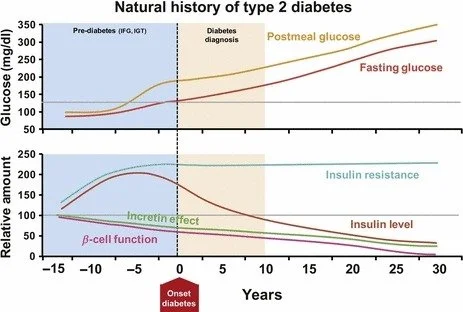87: Making your golden years truly golden
Understanding Life Expectancy, Chronic Disease, and Quality of Life in America
So… you thought this was a nutrition blog, not a stats blog. Uh oh. Today we’re dipping our toe into stats for just a minute (not for long, though, because I can only handle so much stats myself). Today I wanted to talk about a number that I haven’t been able to get out of my head since I heard it: 87 years old.
87 years old is the most common age people are living to in our modern times (or, at least from the 2015 data set I found in this article by Fuchs and Eggleston published in 2018). That’s up over 8 years from 1950, when the most common age people lived to was 78.9 years old.
Why can’t I stop thinking about 87? Because even back in 2015, the United States average life span was kind of hitting a plateau, at right around 78.7 years. There was a very unfortunate dip in average life span during the peak of the Covid pandemic, but even once 2023 data came out, we’re still looking at an average life span of 78.4 years.
Average vs mode. Hmm. What causes the average to be lower than the mode? A lot of very sad stories about young people not making it to senior years due to accidents, death by suicide, or substance use. There are some very important public health projects in the works to help improve these stats to get the average up a bit higher.
So, back to that mode number - 87 years. Many, many more Americans are living longer lives. When I think about that, and I think about chronic disease, I think about quality of life. Let’s say someone retires at age 62. They worked hard for at least 40 years, saved money towards retirement, earned a pension, are eligible for social security, etc, etc. And now, they get to enjoy their time on their terms.
Stats say that most commonly, that person will get to enjoy themselves for 25 years. But wait. The average age of type 2 diabetes diagnosis is 45 years old, according to Carrillo-Larco, et al (2024). So now, this “average” person has already been living with diabetes for 17 years by the time they retire.
“Representative depiction of the natural history of type 2 diabetes” from Tobin, et al, 2012
At around 17 years after diagnosis, we see that insulin production typically slows to about 70%. Obviously, every person’s story is different - but for the sake of our discussion, let’s just keep riding the averages.
What does this all mean? Let’s recap:
Average life expectancy in the US has plateaued
Most common life expectancy in the US is increasing
Diabetes is becoming more common, with the average age of diagnosis occurring before retirement age
Overall: we’re getting more years, but the quality of those years could be much better.
What does this mean for quality of life during the extra time that one finally has control over their own time and finances? Is it just extended time of waiting out the clock? Or are the years truly golden? And at what point in our lives do we get to decide what those years will look like?
To dive into those questions, let’s start with Here’s a joke by Tom Papa about hot dog years:
You’re probably thinking “wow, this dietitian really hates hot dogs”. I actually love hot dogs. I argue they’re environmentally conscious because they use every part of the pig. I digress. Tom Papa argues that each hot dog takes 30 minutes off your life, and that’s fine, because those last 30 minutes are awful anyways. I mean, he makes a good point.
Ugh, and I hate to be this person, but I don’t think hot dogs are taking off the last 30 minutes of your life. Let’s say that reductive scientific study was right - I don’t know exactly what 30 minutes they’re taking off, but I think they could be taking off some of the really good 30 minutes of our lives.
This is why I can’t stop thinking about that 87 number. A lot of people are living a lot longer than humans ever used to. Let’s make those bonus years as good as possible. Maybe with a few hot dogs, but with a side of beans and a snack of berries. So, at what point do we get to decide what those golden years look like? Now.
The best time to plant a tree was 20 years ago; the second best is today - Chinese Proverb

